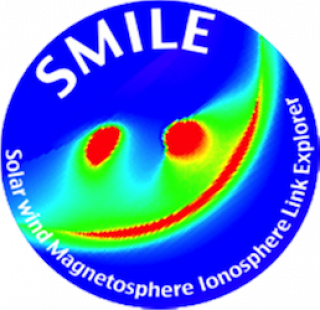SMILE - Solar wind Magnetosphere Ionosphere Link Explorer
SMILE is a joint space mission by ESA and the Chinese Academy of Sciences dedicated to study the boundary between the magnetosphere and interplanetary space using soft X-ray imaging.

6 October 2020
The coupling between the solar wind and the Earth's magnetosphere-ionosphere system, and the geospace dynamics that result, comprise some of the key questions in space plasma physics. In situ measurements by a fleet of solar wind and magnetospheric missions, current and planned, can provide the most detailed observations of the Sun-Earth connections. However, we are still unable to quantify the global effects of the drivers of such connections, and to monitor their evolution with time. This information is the key missing link for developing a comprehensive understanding of how the Sun gives rise to and controls the Earth's plasma environment and space weather.
SMILE (Solar wind Magnetosphere Ionosphere Link Explorer) is a novel self-standing mission dedicated to observing the solar wind - magnetosphere coupling via simultaneous X-ray imaging of the magnetosheath and polar cusps (large spatial scales at the magnetopause), UV imaging of global auroral distributions (mesoscale structures in the ionosphere) and in situ solar wind/magnetosheath plasma and magnetic field measurements. X-ray imaging of the magnetosheath and cusps is made possible by the X-ray emission produced in the process of solar wind charge exchange (SWCX), first observed at comets, and subsequently found to occur in the vicinity of the Earth's magnetosphere. One of the science aims of SMILE is to track the substorm cycle, via X-ray imaging of the dayside magnetosheath and by following its consequences on the nightside with UV imaging of the aurora. This is illustrated by the collage at the top of the page.
Instrumentation
SMILE is a collaborative mission between ESA and the Chinese Academy of Sciences (CAS) that was selected in November 2015, adopted into ESA’s Cosmic Vision Programme in March 2019, is under development and is due for launch in 2024.
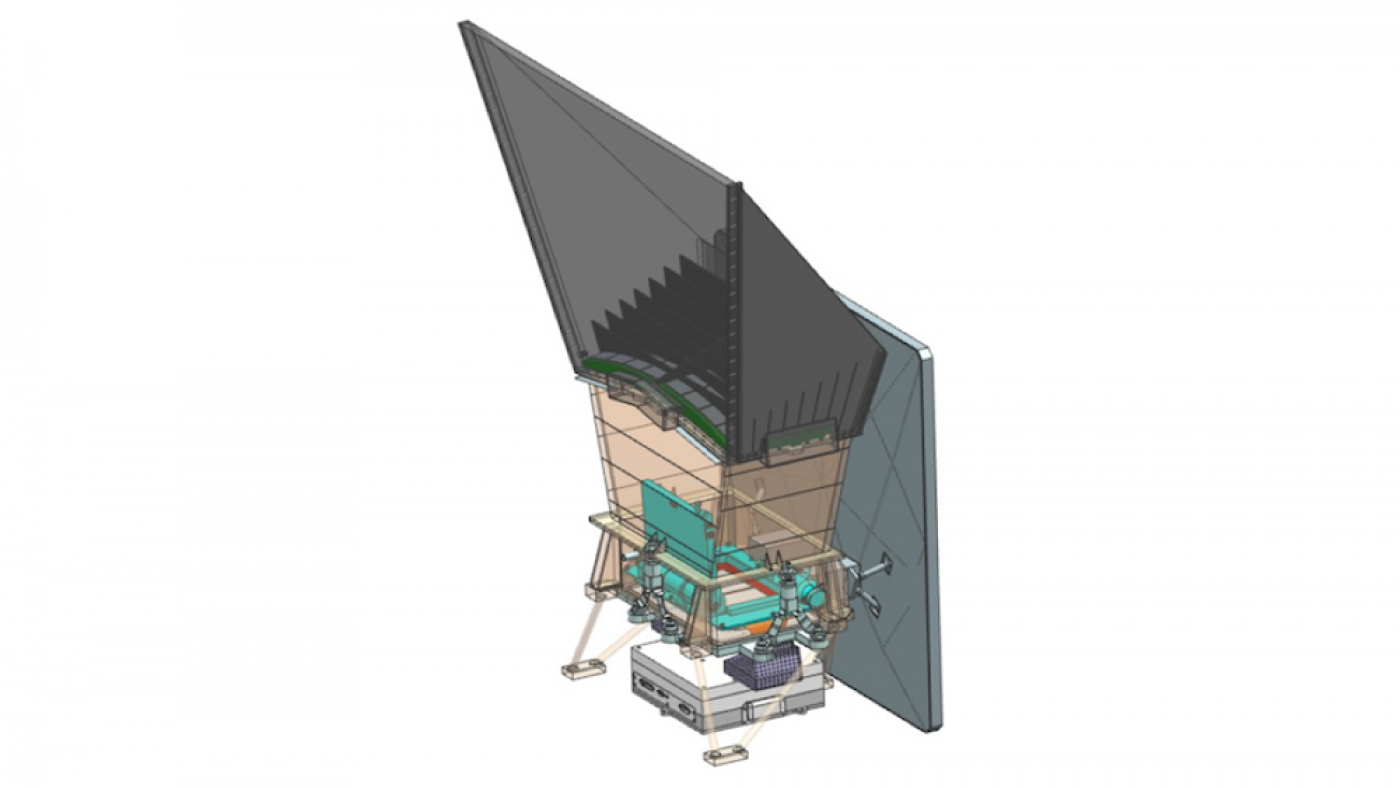
CAD model of the SXI and Front End Electronics (grey box at the bottom) (Courtesy University of Leicester)
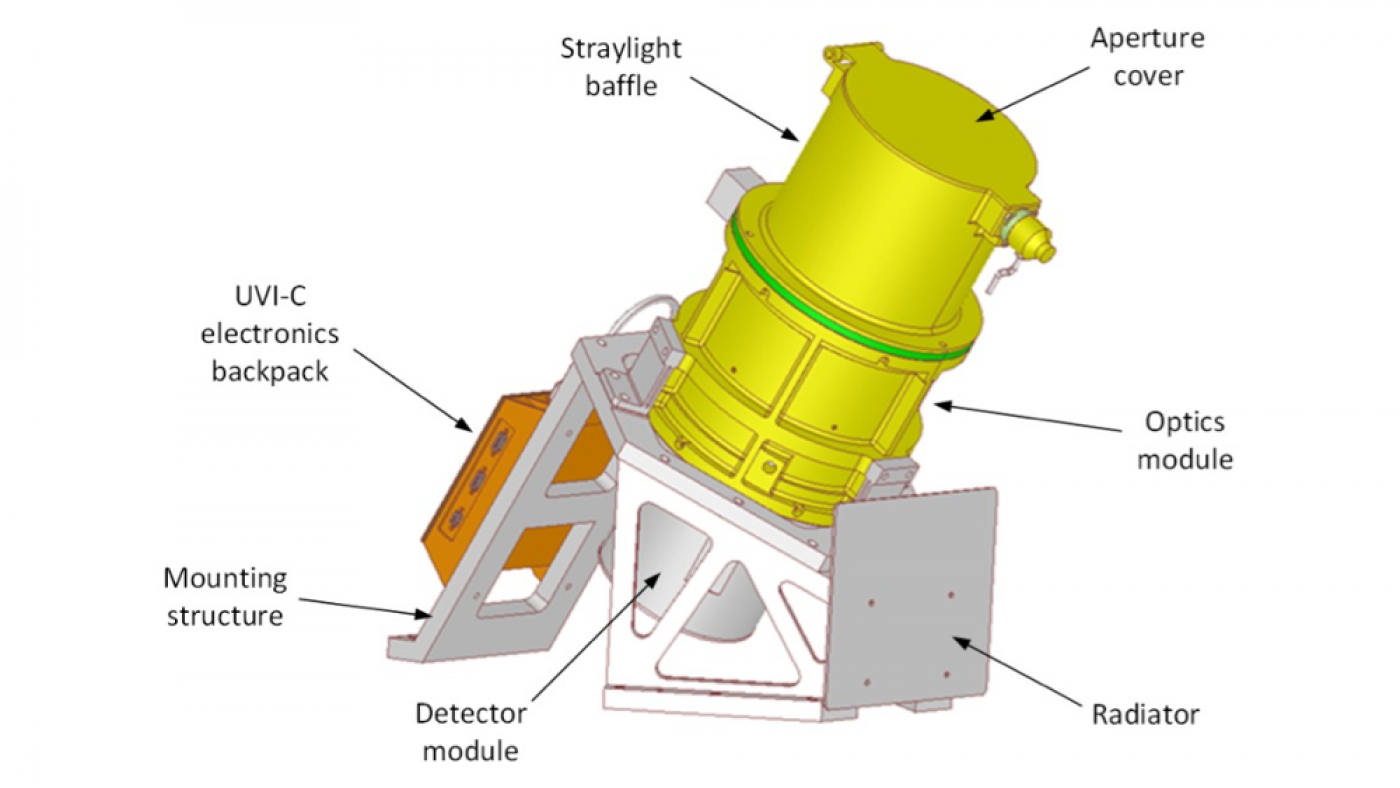
CAD model of the UVI camera (Courtesy University of Calgary)

Left panel: 3D rendition of LIA highlighting the main sub-systems. Right panel: Cut-away view of the LIA electro-optical sensor. A typical path of a detected ion is shown as a red line (Courtesy CAS).

The MAG sensor head. Left panel: 3D rendition from CAD model. Right panel: Finished engineering model (Courtesy CAS).
SMILE will carry two imagers and two in situ measuring instruments. The soft X-ray Imager (SXI) is being developed by the University of Leicester with contributions from MSSL and the Open University in the UK, and from institutions in Austria, Hungary, Spain, the Czech Republic, Norway, Ireland and China. SXI will observe the location, shape, and motion of dayside magnetospheric boundaries, including the bow shock, magnetopause, and cusp regions in the soft X-ray band. SXI is based on lightweight micropore optic technology and incorporates two large format CCDs as the X-ray detection elements. MSSL are responsible for the Front End Electronics which operates the readout of the CCDs and collects the X-ray signals to be processed and transmitted to Earth.
Simultaneous with the SXI observations, the UV imager (UVI) will monitor Earth's northern aurora to link the processes of solar wind injection into the magnetosphere with those acting on the charged particles precipitating into the cusps and eventually generating the aurora. The UVI will employ new filter technologies and an innovative telescope design to obtain UV images of the aurora even in sunlit conditions. UVI is being developed by the University of Calgary and the Canadian Space Agency with contributions from Belgium and China.
The magnetometer experiment (MAG) and the Light Ion Analyser (LIA) are being developed by the National Space Science Center in China with contributions from Austria, and the UK and France, respectively. The MAG scientific goal is to measure the orientation and magnitude of the solar wind and magnetosheath magnetic field while LIA will measure the solar wind and magnetosheath ion distributions and determine their basic moments such as density, velocity, temperature tensor, and heat flux vector.
Spacecraft and Operations
The SMILE mission is a joint endeavour by ESA and CAS from beginning to end, from the proposal call, through the design and implementation phases, launch and operations, to the exploitation period of the observations (nominal mission duration is 3 years). Responsibilities are shared by the two agencies: China contribute the platform, the in situ instrument package and the ground operations after launch (with ESA contribution), while ESA are providing the payload module (the interface plate on which the imagers are mounted), integration and testing in Europe, and the launch, as well as the imagers via national contributions.
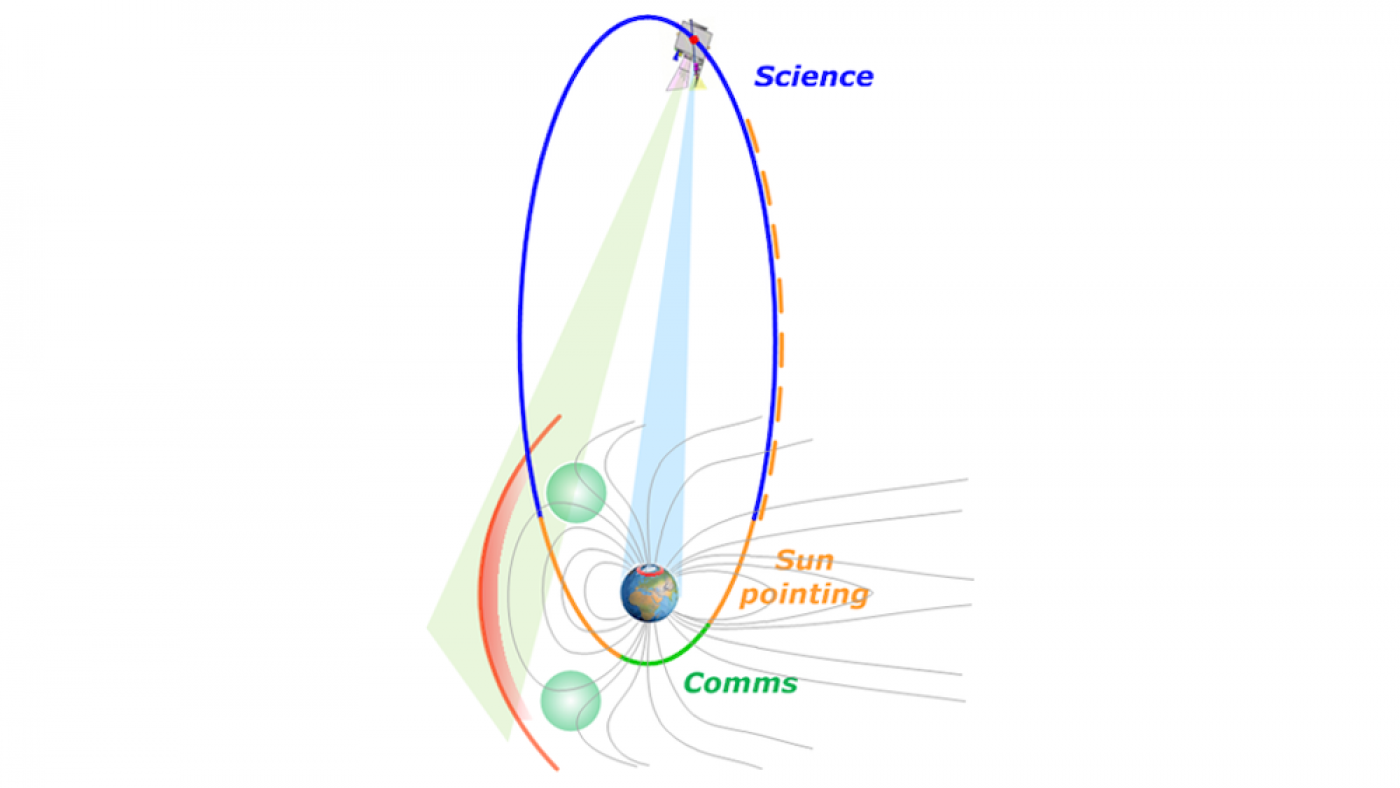
SMILE 51 hour orbit reaching 20 Earth radii at its northern apogee.
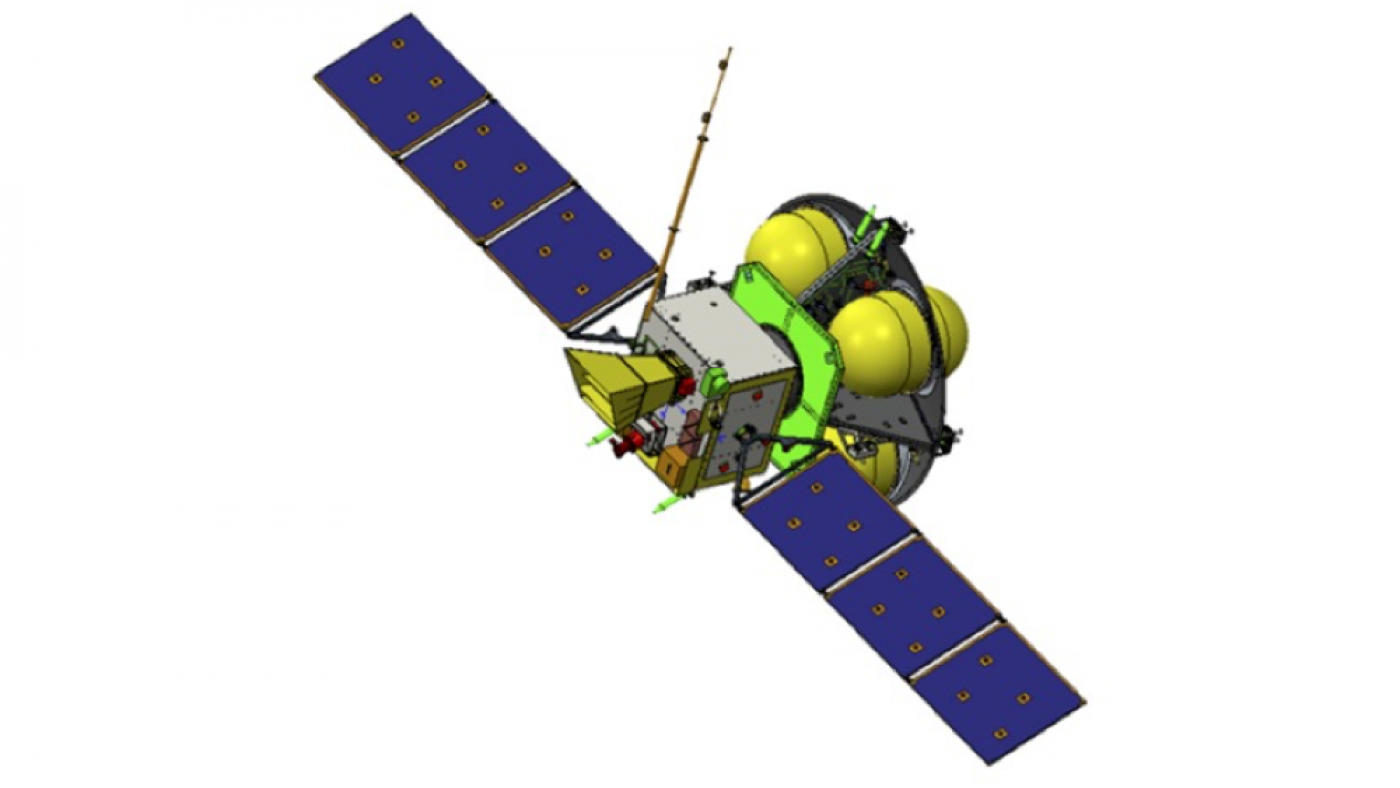
SMILE spacecraft 3D model during the phase 0 study.
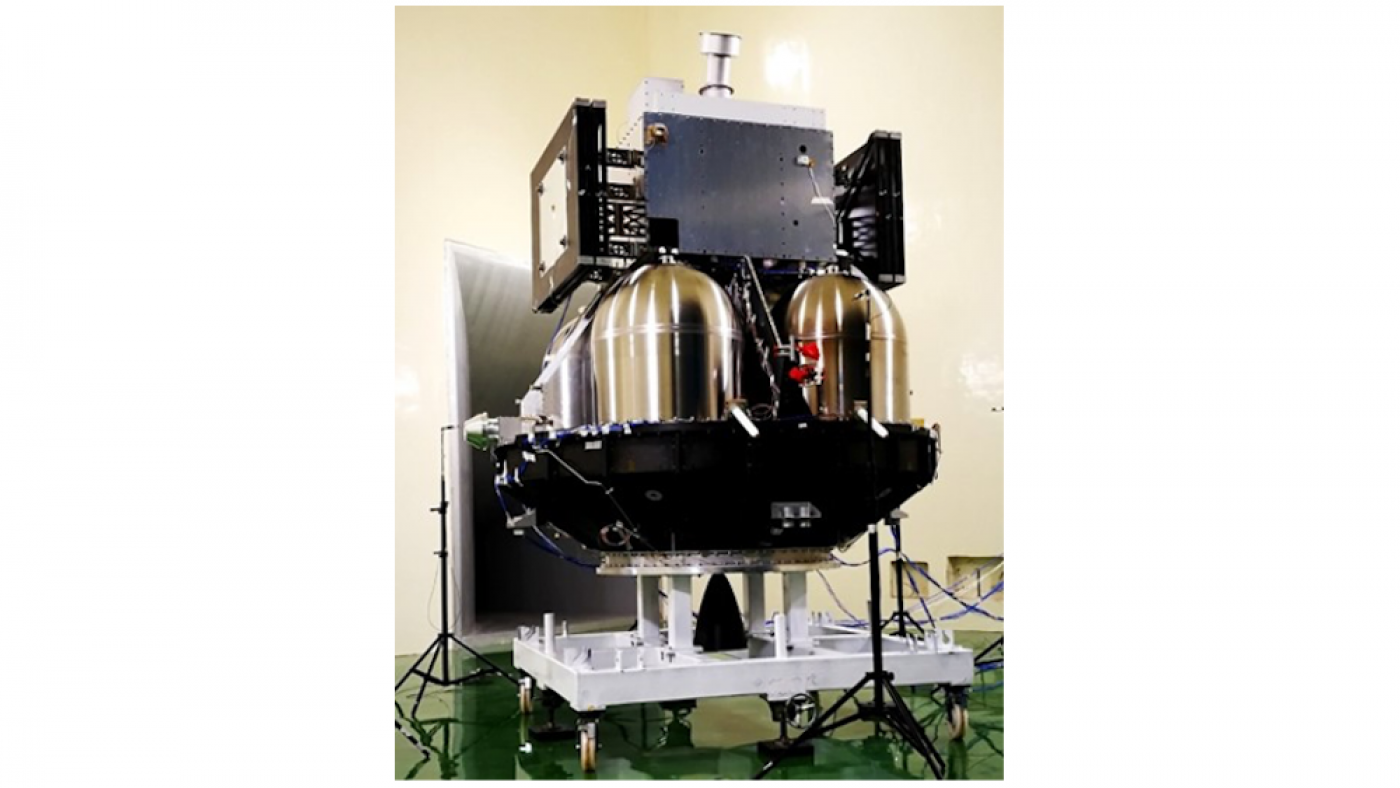
SMILE spacecraft Structural Model showing the four propellant tanks underneath the service module (Courtesy CAS)
The spacecraft will be launched from the Centre Spatial Guyanais, Kourou. It is compatible with a launch on VEGA-C (single launch) and Ariane 6 (dual launch). After launcher separation in LEO, the spacecraft will then transfer to the final HEO science orbit using chemical propulsion. This orbit is highly elliptical with apogee at 20 Earth radii and a period of 51 hours, of which 40 hours are expected to be operational above the Earth’s radiation belts.
The SMILE project is now in Phase B, and construction of the Structural and Thermal Model of instruments and spacecraft is underway.
SMILE is a novel space mission that will revolutionise magnetospheric physics by providing simultaneous images and movies of the magnetopause, cusps, and auroral oval under the impact of the variable solar wind, for up to 40 hours per orbit continuously using state-of-the-art detection techniques.
 Close
Close


